Fuel gauge
| Fuel gauge |
The fuel gauge shows how much fuel is in the tank. It consists of a fuel gauge in the main instrument unit and a level sensor in the tank.

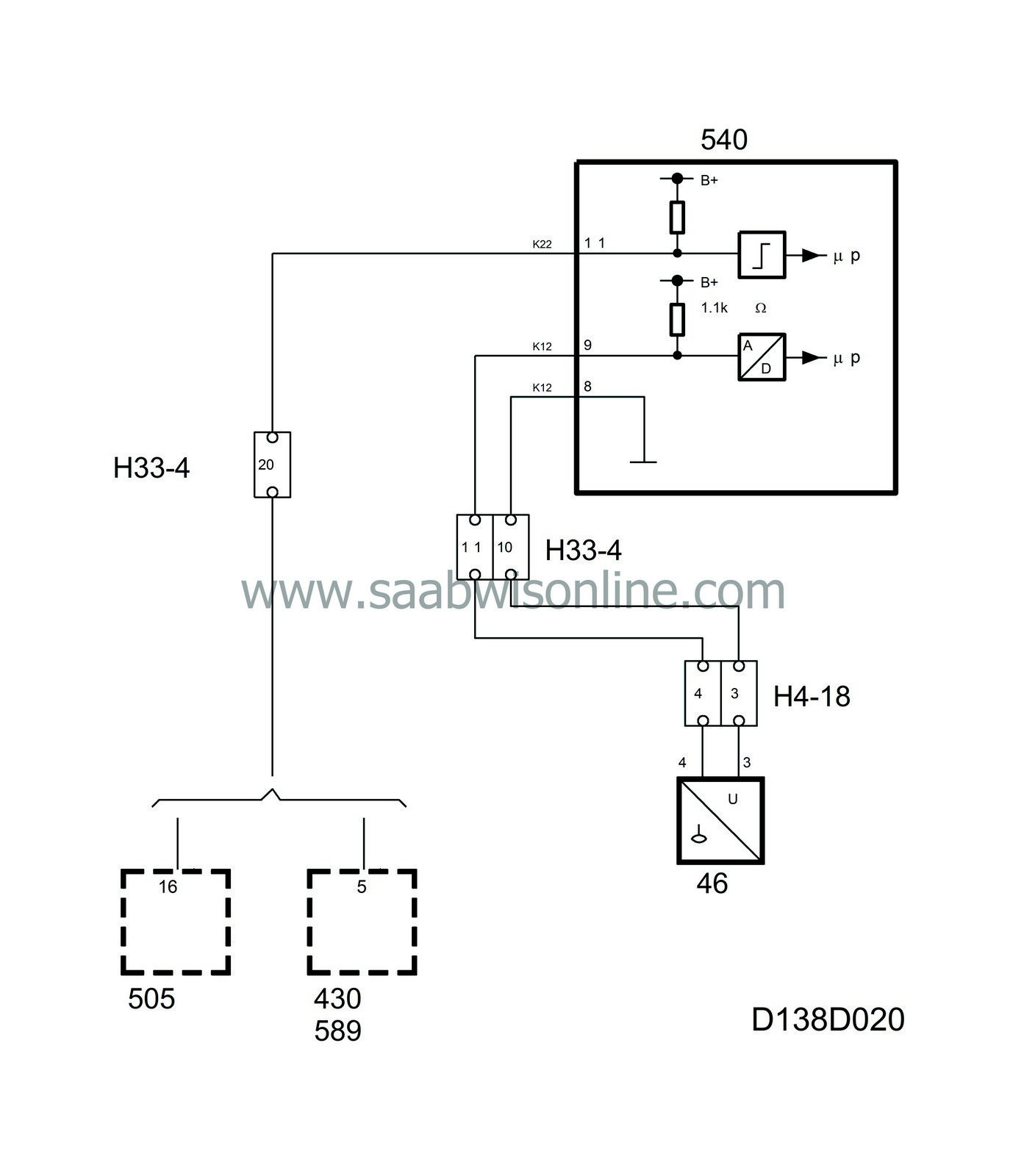
The level sensor has a variable resistance, the value of which corresponds to the level of the float in the tank. The resistance increases with the fuel level. In an empty tank, the resistance is 60±2.6 ohms and in a full tank 390±6 ohms (370±6 ohms for US and CA).
The sensor is powered with 12 V from pin 9 (K12) through a 1.1 kohm resistor integrated in the main instrument unit. The sensor is grounded via main instrument unit pin 8 (K12).
The main instrument unit senses the resistance of the sensor and controls the current to the fuel gauge so that the position of the gauge needle corresponds to the sensor's resistance.
To give a more accurate reading at low fuel levels, the main instrument unit's control module switches to measuring fuel consumption when the fuel level in the tank is below 10 litres.
The main instrument unit's control module sends fuel level information out on the bus.
Diagnostics, fuel gauge
An open circuit/short circuit sets diagnostic trouble code B1720. The gauge needle indicates 0 litres and the fuel reserve indicator lamp lights up.| Fuel reserve indicator lamp |
When the contents of the fuel tank are down to about 10 litres, the low fuel level lamp comes on. This lamp is supplied with current in the main instrument unit and when it should light up it is grounded by the main instrument unit's control module.
The main instrument unit lights this lamp for 3 seconds when the ignition is switched on.
| Fuel consumption |
Main instrument unit pin 11 (K22) is connected to injector No. 3 (all engine management systems) and measures the duration of the injection pulse as a basis for calculating fuel consumption. The main instrument unit uses this information to control the fuel gauge below 10 litres.
The main instrument unit sends the information Fuel Consumed Since Start, unit 0-65535 ml out on the bus.
Diagnostics, fuel consumption
An open circuit when engine speed is above 310 rpm will generate diagnostic trouble code B1730. A short circuit will generate a diagnostic trouble code in the engine management system.| Low fuel level (OBDII) |
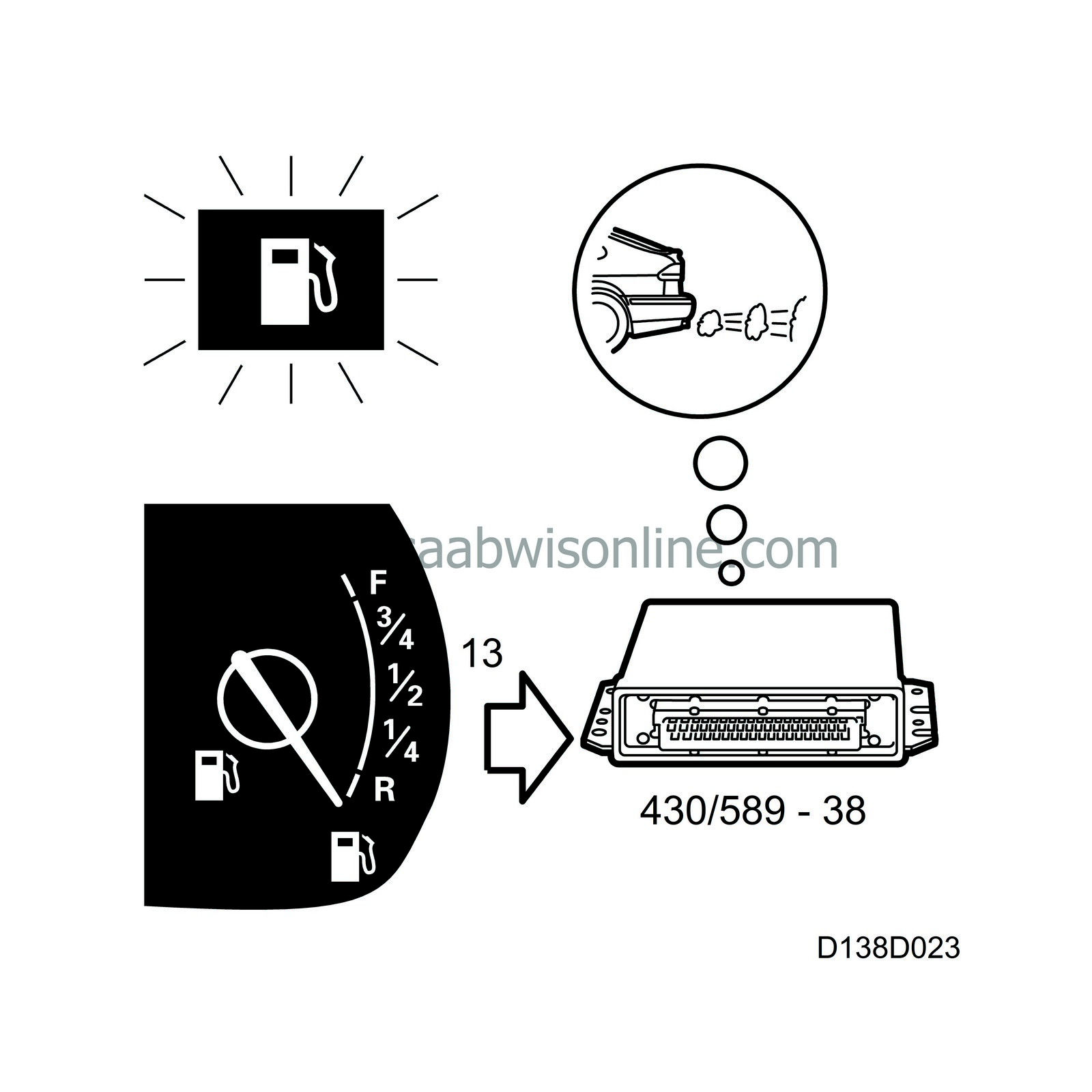
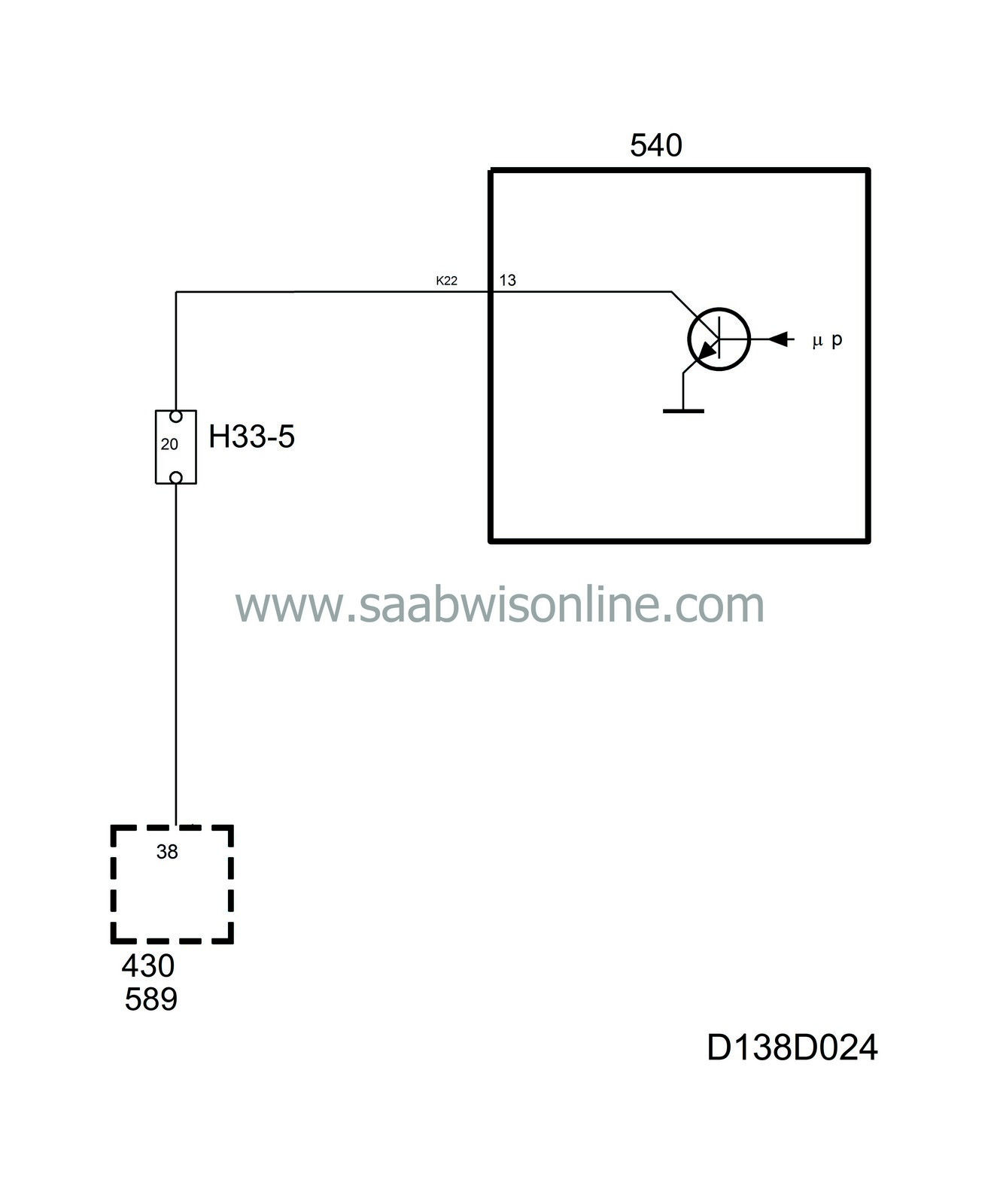
At the same time as the low fuel level indicator lamp comes on, pin 13 (K22), connected to the engine management system, is grounded. This function is used only for OBDII diagnostics.
| Tank venting diagnostics (OBDII) |
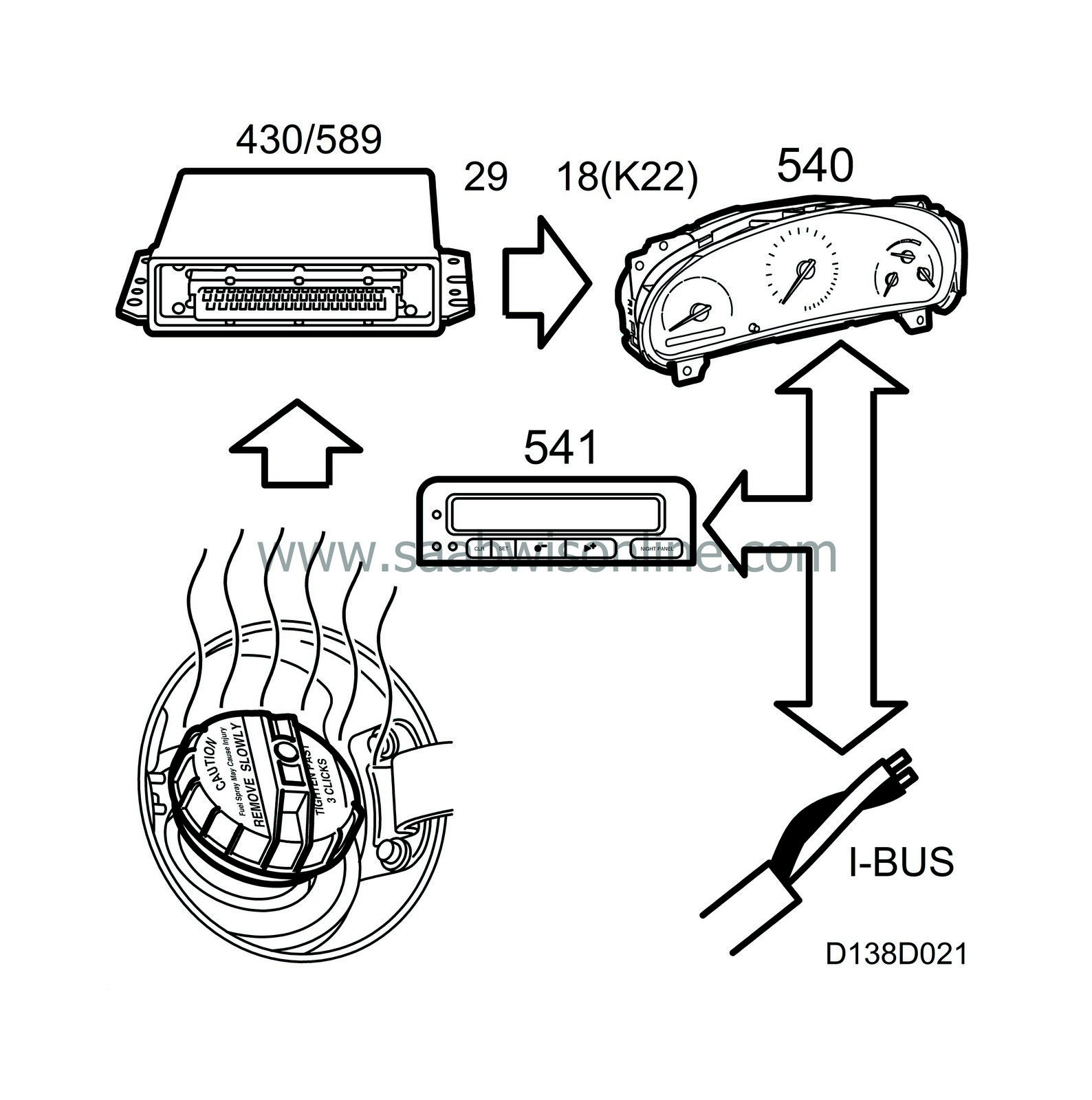
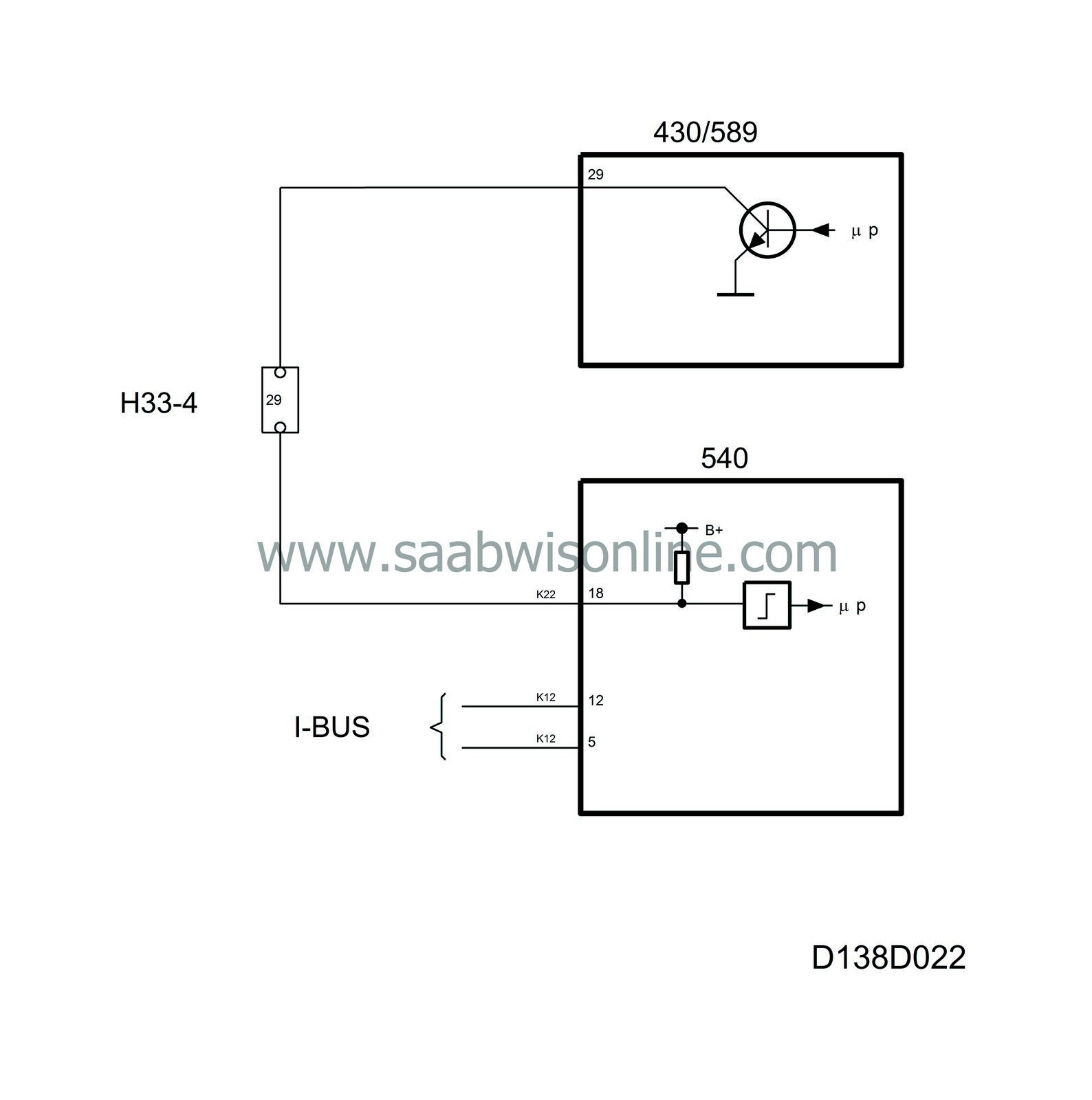
Trionic is connected to main instrument unit pin 18 (K22). If leakage is detected in the tank venting system by engine management system diagnostics, the lead to pin 18 (K22) will be grounded and the main instrument unit will send the information "Tighten fuel filler cap ON" out on the bus. The SID unit then displays the requested message.


